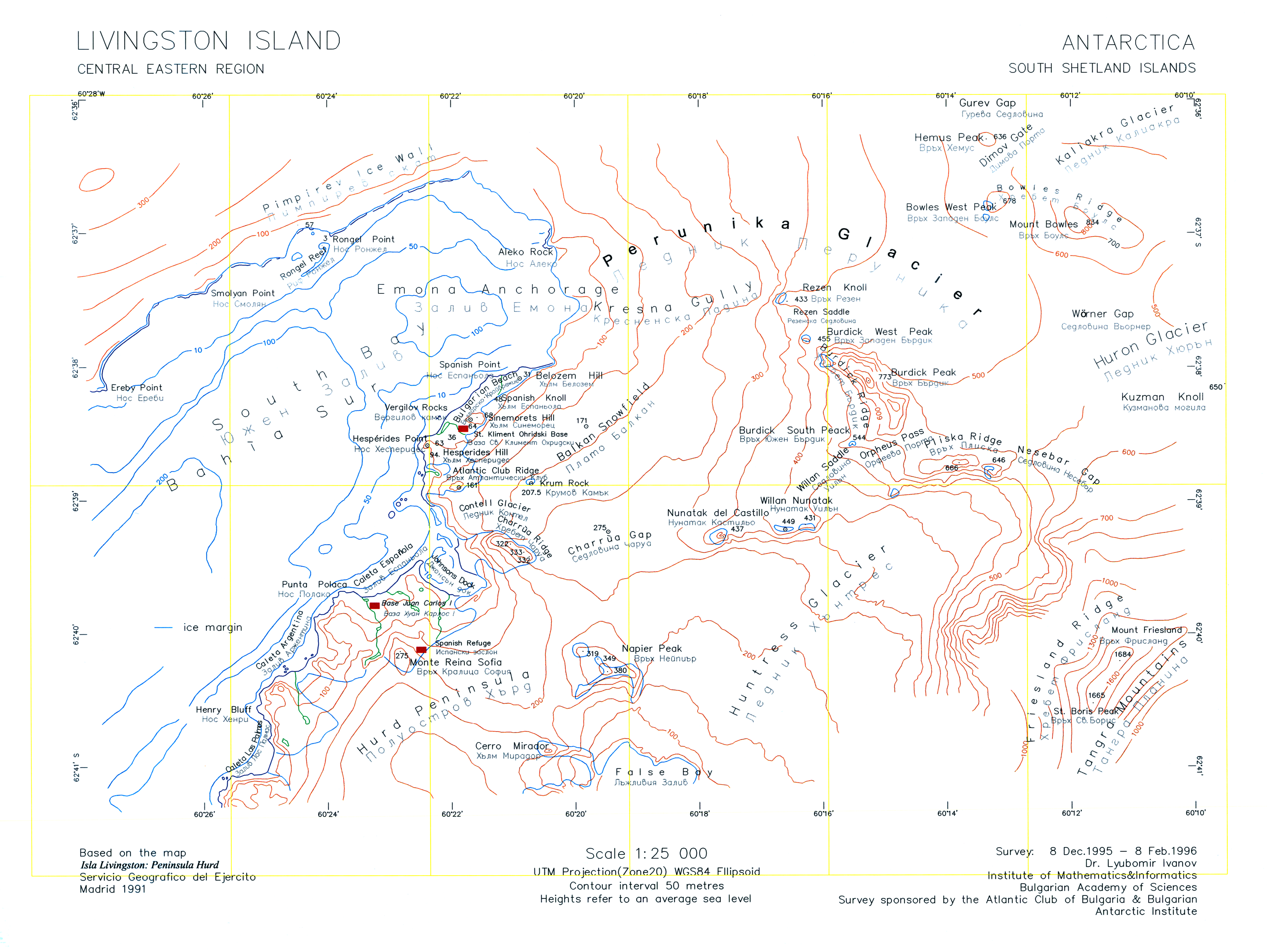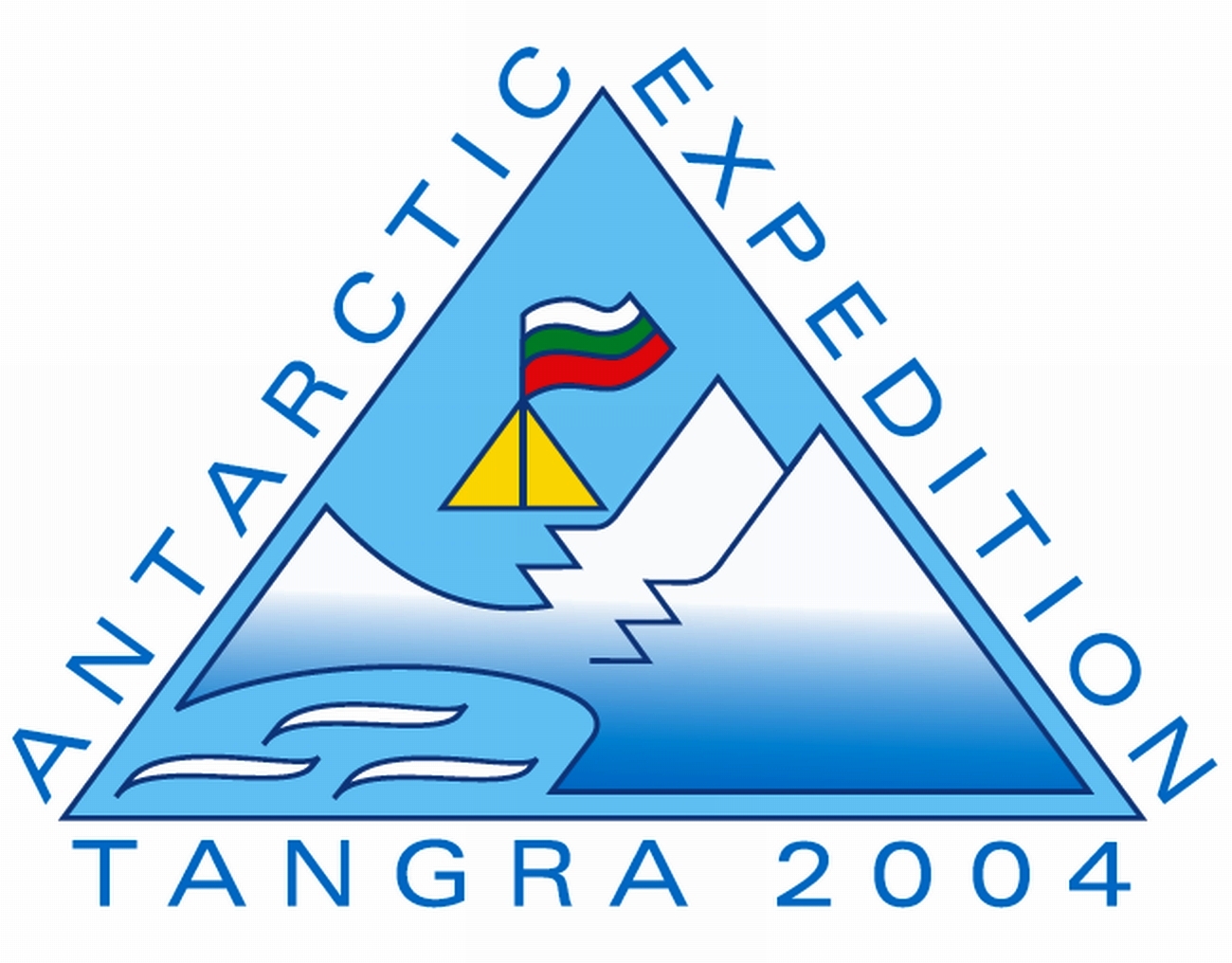|
Beroe Hill
Beroe Hill (Halm Beroe \'h&lm be-'ro-e\) is a hill of 400 m in the southwest extremity of Gleaner Heights, Livingston Island, West Antarctica. It is surmounting Perunika Glacier to the south and Saedinenie Snowfield to the northwest. The hill was named after the ancient Thracian town of Beroe, ancestor of the present city of Stara Zagora. Location The hill is located at which is 1.9 km southwest of the summit of the heights, 4.7 km north-northeast of Rezen Knoll and 3 km northwest of Hemus Peak. Bulgarian mapping in 2005, 2009 and 2017 from the Tangra 2004/05 The Tangra 2004/05 Expedition was commissioned by the Antarctic Place-names Commission at the Ministry of Foreign Affairs of Bulgaria, managed by the Manfred Wörner Foundation, and supported by the Bulgarian Antarctic Institute, the In ... topographic survey. Maps * L.L. Ivanov et al. Antarctica: Livingston Island and Greenwich Island, South Shetland Islands. Scale 1:100000 topographic m ... [...More Info...] [...Related Items...] OR: [Wikipedia] [Google] [Baidu] |
Rezen Knoll
Rezen Knoll ( bg, връх Резен, vrah Rezen, ) is a knoll rising to 433 m in eastern Livingston Island in the South Shetland Islands, Antarctica. The knoll is bounded to the east, north and west by Perunika Glacier, and linked to Burdick Ridge by Rezen Saddle. The feature is 250 m wide, extending 500 m in east-west direction. Composed of lavas, with precipitous slopes except to the east. Partly ice-free height and western and northern slopes. First ascent by the Bulgarians Kuzman Tuhchiev, Dimo Dimov and Ivan Tashukov from St. Kliment Ohridski Base during the 1994/95 season. Rough British mapping in 1968, detailed mapping by the Spanish Servicio Geográfico del Ejército in 1991. Co-ordinates, elevation and distances given according to a 1995-96 Bulgarian topographic survey. A descriptive name of national geography. Golyam (Big) Rezen and Malak (Little) Rezen are two of the most spectacular peaks of Vitosha Mountain near Sofia, Bulgaria. ‘Rezen’ is the Bulgarian ... [...More Info...] [...Related Items...] OR: [Wikipedia] [Google] [Baidu] |
Antarctic Place-names Commission
The Antarctic Place-names Commission was established by the Bulgarian Antarctic Institute in 1994, and since 2001 has been a body affiliated with the Ministry of Foreign Affairs of Bulgaria. The Commission approves Bulgarian place names in Antarctica, which are formally given by the President of the Republic according to the Bulgarian Constitution (Art. 98) and the established international practice. Bulgarian names in Antarctica Geographical names in Antarctica reflect the history and practice of Antarctic exploration. The nations involved in Antarctic research give new names to nameless geographical features for the purposes of orientation, logistics, and international scientific cooperation. As of 2021, there are some 20,091 named Antarctic geographical features, including 1,601 features with names given by Bulgaria.Bulgarian Antarctic Gazett ... [...More Info...] [...Related Items...] OR: [Wikipedia] [Google] [Baidu] |
Composite Gazetteer Of Antarctica
The Composite Gazetteer of Antarctica (CGA) of the Scientific Committee on Antarctic Research (SCAR) is the authoritative international gazetteer containing all Antarctic toponyms published in national gazetteers, plus basic information about those names and the relevant geographical features. The Gazetteer includes also parts of the International Hydrographic Organization (IHO) General Bathymetric Chart of the Oceans (GEBCO) gazetteer for under-sea features situated south of 60° south latitude. , the overall content of the CGA amounts to 37,893 geographic names for 19,803 features including some 500 features with two or more entirely different names, contributed by the following sources: {, class="wikitable sortable" ! Country ! Names , - , United States , 13,192 , - , United Kingdom , 5,040 , - , Russia , 4,808 , - , New Zealand , 2,597 , - , Australia , 2,551 , - , Argentina , 2,545 , - , Chile , 1,866 , - , Norway , 1,706 , - , Bulgaria , 1,450 , - , Ge ... [...More Info...] [...Related Items...] OR: [Wikipedia] [Google] [Baidu] |
Tangra 2004/05
The Tangra 2004/05 Expedition was commissioned by the Antarctic Place-names Commission at the Ministry of Foreign Affairs of Bulgaria, managed by the Manfred Wörner Foundation, and supported by the Bulgarian Antarctic Institute, the Institute of Mathematics and Informatics at the Bulgarian Academy of Sciences, Bulgarian Posts, Uruguayan Antarctic Institute, Peregrine Shipping (Australia), and Petrol Ltd, TNT, Mtel, Bulstrad, Polytours, B. Bekyarov and B. Chernev (Bulgaria). Expedition team Dr. Lyubomir Ivanov (team leader), senior research associate, Institute of Mathematics and Informatics at the Bulgarian Academy of Sciences; chairman, Antarctic Place-names Commission; author of the 1995 Bulgarian Antarctic ''Toponymic Guidelines'' introducing in particular the present official system for the Romanization of Bulgarian; participant in four Bulgarian Antarctic campaigns, and author of the first Bulgarian Antarctic topographic maps. Doychin Vas ... [...More Info...] [...Related Items...] OR: [Wikipedia] [Google] [Baidu] |
Hemus Peak
Hemus Peak ( bg, връх Хемус, vrah Hemus, ) is an ice-covered peak rising to off the northwest extremity of Bowles Ridge in eastern Livingston Island. The feature is breast-shaped, long in east-west direction and wide, and overlooks Kaliakra Glacier to the northeast and Perunika Glacier to the southwest. Hemus is an ancient name of Stara Planina (Balkan Mountains), the central mountain range separating northern from southern Bulgaria. Location The peak is located at , which is northwest of Mount Bowles (, summit of Bowles Ridge), north-northwest of Rayna Knyaginya Peak, north-northeast of Chirpan Peak, northeast of Rezen Knoll, m east by north of Aleko Point, and south by east of the summit of Gleaner Heights () (Rough British mapping in 1968, Bulgarian mapping from a 1995-96 ground survey). Maps South Shetland Islands.Scale 1:200000 topographic map. DOS 610 Sheet W 62 60. Tolworth, UK, 1968. * Islas Livingston y Decepción. Mapa topográfico a escala 1:10000 ... [...More Info...] [...Related Items...] OR: [Wikipedia] [Google] [Baidu] |
Stara Zagora
Stara Zagora ( bg, Стара Загора, ) is the sixth-largest city in Bulgaria, and the administrative capital of the homonymous Stara Zagora Province. Name The name comes from the Slavic root ''star'' ("old") and the name of the medieval region of Zagore ("beyond the alkanmountains" in Slavic) The original name was Beroe, which was changed to Ulpia Augusta Traiana by the Romans. From the 6th century the city was called Vereja and, from 784, Irenopolis (Greek: Ειρηνούπολις) in honour of the Byzantine empress Irene of Athens. In the Middle Ages it was called Boruj by the Bulgarians and later, Železnik. The Turks called it Eski Hisar (old fort) and Eski Zagra, from which its current name derives, assigned in 1871. History The original Thracian settlement dates from the 5-4th century BC when it was called Beroe or Beroia. The city was founded by Philip II of Macedon in 342 BC. Under the Roman Empire, the city was renamed ''Ulpia Augusta Traiana'' in hon ... [...More Info...] [...Related Items...] OR: [Wikipedia] [Google] [Baidu] |
Thracian
The Thracians (; grc, Θρᾷκες ''Thrāikes''; la, Thraci) were an Indo-European speaking people who inhabited large parts of Eastern and Southeastern Europe in ancient history.. "The Thracians were an Indo-European people who occupied the area between northern Greece, southern Russia, and north-western Turkey. They shared the same language and culture... There may have been as many as a million Thracians, diveded among up to 40 tribes." Thracians resided mainly in the Balkans (mostly modern day Bulgaria, Turkey and Greece) but were also located in Anatolia (Asia Minor) and other locations in Eastern Europe. The exact origin of Thracians is unknown, but it is believed that proto-Thracians descended from a purported mixture of Proto-Indo-Europeans and Early European Farmers, arriving from the rest of Asia and Africa through the Asia Minor (Anatolia). The proto-Thracian culture developed into the Dacian, Getae, and several other smaller Thracian cultures. Thracian cult ... [...More Info...] [...Related Items...] OR: [Wikipedia] [Google] [Baidu] |
Saedinenie Snowfield
Saedinenie Snowfield ( bg, ледник Съединение, lednik Saedinenie, ) on Livingston Island in the South Shetland Islands, Antarctica is situated southwest of Rose Valley Glacier, west of Panega Glacier, northwest of Kaliakra Glacier, north of lower Perunika Glacier and east-northeast of Tundzha Glacier. It is bounded by Teres Ridge to the west, the glacial divide between the Drake Passage and Bransfield Strait to the south, Gleaner Heights, Elhovo Gap and Leslie Hill, Livingston Island, Leslie Hill to the southeast, and Leslie Gap and Vidin Heights to the east. The snowfield extends 4.7 km inland and 15.5 km in southwest-northeast direction, and drains into Hero Bay between Melta Point and Slab Point. A survey bivouac in eastern Saedinenie Snowfield near Leslie Hill, Livingston Island, Leslie Hill was occupied 24–28 December 2004. The feature was named after the Bulgarian town of Saedinenie, Plovdiv Province, Saedinenie ('Reunification'), in associatio ... [...More Info...] [...Related Items...] OR: [Wikipedia] [Google] [Baidu] |







